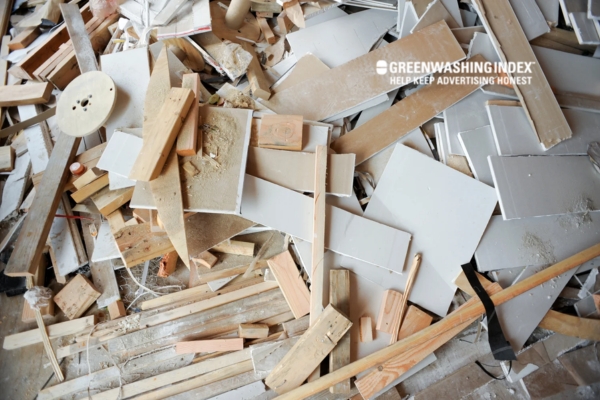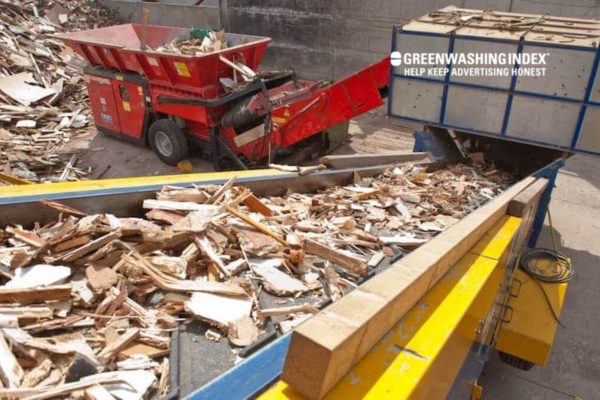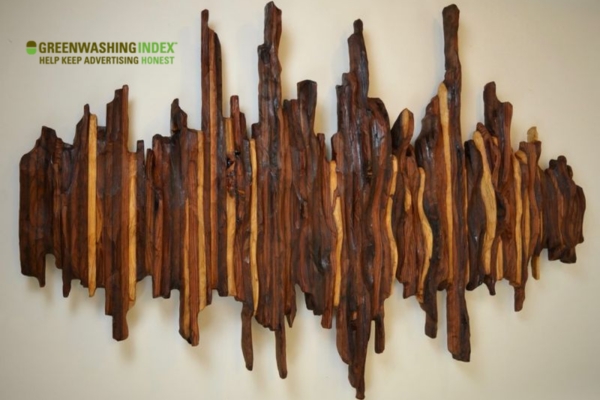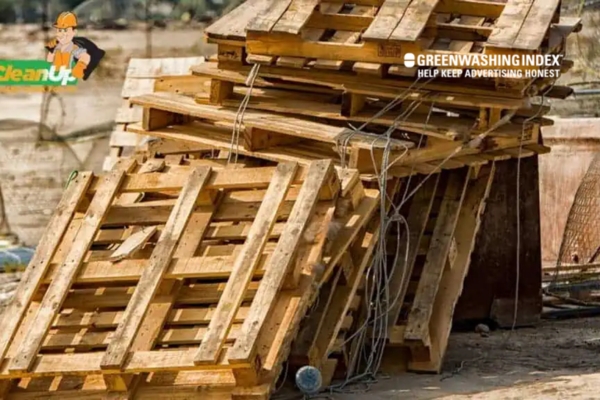Imagine every piece of wood has a story and, potentially, a second chance at life. Will it end up locked away in a landfill or reborn into something new and exciting? That’s where I come in to unravel the amazing journey of wood recycling.
You see, it’s not just about throwing old wood into a bin; it’s about giving that wood another shot at usefulness while taking care of our beautiful planet. Intrigued? Keep reading to find some eye-opening tidbits on how recycled wood is changing the game for green living!
Wood recycling breathes new life into old timbers, transforming yesterday’s structures into tomorrow’s eco-friendly materials. It’s all about taking used wood and making it ready for another round – whether that means shaping it into new furniture or using it in sustainable building projects. By doing so, we reduce the environmental impact of waste and support circular economy practices that help keep our forests lush and full of life.
The Different Grades of Recycled Wood
When I talk about wood recycling, an important part is knowing the grades of recycled wood. You see, not all recycled wood is the same. There are different types of “grades,” and each one has a different use.

A Closer Look at Wood Recycling Standards
Now, let’s dig into these wood grades and what they mean.
Grade A – This is the top-quality stuff. It usually comes from places like old furniture or construction sites where they haven’t painted or treated the wood with chemicals. It’s clean and doesn’t have any metal bits like nails in it.
Grade B – This grade includes woods that have a bit more going on than grade A. They might have some paint or varnish on them, but not too much. They can come from things like floors or decking.
Grade C – Now we’re looking at woods that have seen better days. Grade C has all sorts of things mixed in, like woods with lots of paint, treated timbers (like railway sleepers), or even some metal parts still left over.
Each grade can be used for different things:
- Grade A recycled wood could be turned back into furniture.
- Grade B might become a chipboard.
- And Grade C could end up as fuel for producing energy.
So, when you think about wood recycling, remember that the quality really counts and determines how it can be reborn into something new!
Also Read: DIY Composting Toilet Guide: Build Cheap, Eco-Friendly Now!
Step-by-Step Guide on How to Embark on Wood Recycling
Wood recycling is a journey we all can embark on. It’s about turning old wood into something new and helpful again. I want to share some simple steps to get your wood ready for this path.

How To Prepare Your Wood for the Recycling Odyssey?
Before you send off your wood to be born anew, there are things you must do:
- Inspect Your Wood: Look at each piece closely. Make sure it’s not rotten or covered in mold.
- Clean It Up: If your wood is dirty, give it a gentle clean. You don’t need strong chemicals; a brush might just do the trick.
- Pull Out Nails and Screws: This is important! Use tools like a hammer or pliers to take out any metal bits. They could hurt the machines that break down the wood later.
- Take Off Any Paint or Varnish: These coatings can cause trouble in recycling, so try your best to remove them.
- Keep Types Apart: Not all woods are the same; keep hardwood separate from softwood.
- Cut Down Big Pieces: If they’re too large, cut them into smaller parts so they are easier to handle.
These steps will make sure your wood gets recycled without any hitches.
Navigating Your Way to Local Wood Recycling Centers
Finding a place that takes in recycled wood isn’t tricky:
- Online Search: Type in ‘wood recycling near me’ into an internet search engine and check what comes up.
- Ask Around: Talk with friends or neighbors who’ve done it before; maybe they know good spots.
- Check With Local Authorities: Sometimes town or city councils have information on eco-friendly services, including where you can recycle your wood materials.
- Look For Construction Sites: Some of them may have signs about wanting old wood for repurposing—don’t hesitate to ask!
- Visit Reuse Centers: These places love getting their hands on materials that can be given new life.
When reaching out, always ask what kinds of woods they accept and if there are any preparation steps I haven’t mentioned here.
Remember: Taking small steps towards recycling helps us all by keeping our forests green and our earth clean!
The Journey from Collection to Rebirth
- Collection – Kickstarting the cycle.
The first step in wood recycling is gathering up all the used or leftover wood. This could be scraps from construction sites, old furniture, or even tree branches that have fallen in your backyard. People bring these pieces of wood to a place where they can start their route to being recycled. - Transportation – Moving materials safely.
Next, we need to move this collected wood to facilities where it can be recycled properly. Trucks are often used for this task, making sure that the wood gets from point A to point B without causing any harm to people or the environment. - Sorting – Distinguishing different types.
Once at the recycling facility, not all wood is mixed together—different kinds must be sorted out because they’re not all recyclable in the same way. Clean lumber might end up in a different pile than painted or treated wood. - Cleaning – Removing foreign objects and contaminants.
Before announcing any piece of wood ready for recycling, it needs cleaning up; nails, screws, and staples have got to go! Cleaned-up lumber means safety for machines and quality material for future products. - Processing – Shredding or chipping into smaller pieces
The cleaned-up old timber is then shredded or chipped down into small bits and pieces—like breaking it down so it can have a fresh start. - Manufacturing/Reforming – Combining with adhesives for new shapes/products
These small bits are combined with special glues so they stick together once again but now take on new forms—perhaps boards for constructing new things! - Treatment (if necessary) – Applying protective chemicals against pests/deterioration
Sometimes, these newly formed products need protection against termites or rotting; chemicals help make sure that our recycled timber stays strong and usable longer. - Quality Checking – Ensuring material meets necessary standards: Just like any other product on the market, recycled woods need checking—that means making sure there are no defects and that they’re tough enough for use again in building up new stuff!
- Sales & Distribution – Getting recycled products out there, ready for reuse! Finally, it comes time to send these fresh slabs of reused material out into the world; hardware stores may be your home—they’re ready to be part of something big again!
Through each stage of this process—from keeping things tidy at collection points all the way to selling those high-quality reclaimed materials—we see some thorough work taking place right before our very eyes: it’s literally giving old trees a second chance!
Also Read: Paint Recycling: The Ultimate Guide to Responsible Disposal
Creative Reincarnations Using Recycled Wood
When I think about wood recycling, I see a door to endless creativity. Every piece of recycled wood holds stories and history. It is both eco-friendly material that whispers of the past and promises for the future. I find joy in discovering how recycled wood can be reborn into something stunning and useful.

Broadening Horizons with Recycled Wood Possibilities
The possibilities for using recycled wood in homes, projects, and businesses are vast and inspiring. Turning old into new is not just good for our planet; it also adds charm and character to our spaces. Let me walk you through some creative ways people are using recycled wood:
- Furniture: One of the most popular uses of recycled wood is in making furniture. Imagine sitting at a desk where the wood once formed part of a historic building or resting on a bench made from an old fence post. Tables, chairs, shelves — you name it; they can all be crafted from this sustainable resource.
- Wall Accents: Who needs wallpaper when you can have a wall accented with pieces of recycled wood? It could be as simple as cladding one feature wall or as intricate as creating an art piece directly on your space’s surface.
- Flooring: Floors made from recycled timber bring warmth to any room. They wear their age proudly with grains and colors that only time can provide.
- Crafts: Smaller bits of recycled wood find new life in crafts like picture frames, candle holders, or even toy blocks for children.
- Outdoor Spaces: Recycled woods are perfect for outdoor use too! Think garden planters, birdhouses, or even custom-built patio furniture.
By reimagining these old woods into new forms, we are not just making beautiful objects; we are taking part in green building practices and supporting sustainable forestry without cutting down more trees. Plus, this approach fits perfectly within what we call circular economy wood – this means that instead of throwing things away when they get old, we give them a new purpose.
Every time I use recycled wood in my projects or recommend it to others for their homes or businesses, I feel like I’m contributing to something bigger than myself: less waste going into landfills while preserving the environmental impact of our actions—it feels good!
Don’t underestimate the potential locked within each weathered plank or beam—wood recycling opens up realms where both beauty and sustainability thrive hand in hand.
Also Read: DIY Face Masks: Your Guide to Eco-Friendly Creations
Disposing of Non-recyclable Woods Safely
As I explore the world of wood recycling, it’s clear that some woods just don’t fit in the circle. But this doesn’t mean they should be thrown away carelessly. How you say goodbye to these non-recyclable pieces is crucial for our planet.

Not All Woods Are Born Equal – Some Simply Can’t Be Recycled
When we think about wood recycling, we often imagine all types of wood being reborn into something new. Sadly, that’s not always possible. Here are some types of wood that can’t find their way back through standard recycling methods:
- Painted or Treated Wood: Once the wood is painted or treated with chemicals, it becomes a no-go for recycling plants. The chemicals can be harmful and cause trouble when trying to reuse the material.
- Laminated Wood: This type includes items like some furniture and flooring that have layers glued together. The glue makes it tough to recycle these woods.
- Wood with Metal Fittings: Often, wood will have nails, screws, or other metal parts attached. These bits need to be removed before recycling; if they can’t be separated easily, the wood might not be recycled.
Knowing what can and cannot enter the world of recycled materials helps us better manage our resources and protect our planet.
Disposing With Care – Safety First!
Getting rid of non-recyclable woods demands thoughtfulness towards our environment. Here’s how you can do your part:
- Local Waste Guidelines: Check with your city or town’s waste disposal rules first; they might have specific instructions for throwing away non-recyclable wood.
- Landfill Restrictions: Before considering a landfill as an option, look into whether there are any restrictions on disposing of certain types of wood.
- Donation Centers: Sometimes, even if you can’t recycle a piece of wood, someone else might find a use for it – consider giving it away instead.
- Specialty Disposal Services: There are companies that focus on getting rid of hard-to-handle wastes safely and responsibly — reaching out to them could help ensure proper disposal.
- Repurposing at Home: If you’re crafty or handy around the house, why not turn old pieces into art projects or small fixes?
Even in farewell moments when recycling isn’t an option — taking care ensures we don’t harm nature more than necessary!
FAQs
What are some unexpected products made from recycled wood?
You might be surprised to find that old wood can turn into new things like picture frames, park benches, and even stylish bags or accessories. It’s amazing what can come from something we used to think was just scrap.
Could contaminated wood be a hazard during the recycling process?
Yes, it can. Wood treated with chemicals or painted could harm those handling it and the environment if not dealt with properly. It’s important to check and clean wood before recycling it.
Is there any certification I should look out for when purchasing items made from recycled wood?
Definitely! Look for labels like the Forest Stewardship Council (FSC) Recycled label. This means the product is made of post-consumer or post-industrial reclaimed material and follows certain environmental standards.
Conclusion
Wood recycling is a shining beacon for sustainable living. It’s not just about reducing waste; it’s about embracing a philosophy that respects our natural resources and seeks harmony with the environment.
As I’ve discussed, the journey of wood from being discarded to finding new life in different forms is fascinating and crucial for a greener future. By supporting eco-friendly materials like recycled wood, we’re contributing to healthier forests and reducing our environmental impact.
Understanding what kinds of wood can be recycled, how they are processed, and their creative uses helps us appreciate the circular economy wood stands for. Moreover, learning to dispose of non-recyclable woods responsibly ensures that we leave no stone unturned in our quest for sustainability. So whether you’re knee-deep in green building practices or looking to start, remember: every piece of wood has a story; make sure it’s one that lasts.



